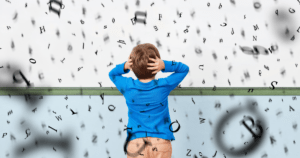Want to increase your geo-literacy?
First, what is geo-literacy? It is your literacy or understanding on how geography impacts our world the interconnection between all of Earth’s systems and members. Read more on why teaching geography is important here.
Traditionally, geography study is in the form of memorization. It is static and out of context and is crammed for a test but not necessarily learned for a lifetime. Geography is more than just continents and bodies of water, countries, longitude, latitude, understanding landforms, a compass and a key.
Geography touches all subjects in education and as such is a subject itself worthy of our time in home education. This isn’t to say that you need to add something else to your list of daily study material, it is actually the opposite. You can simply optimize what you are already doing to increase geo-literacy.
When you incorporate geography, you add a layer of color and context to the learning happening in your home to make the experience richer and fuller and also more memorable.
This change can happen with just a shift, the awareness of geography as a science, realizing that its already imbedded in your books and areas of study. Decide to call attention to it in a natural way that brings it to life.
Here are six ways to increase geo-literacy in your home:
- Go Outside. Spending time outdoors has countless benefits, our family works at getting everyone outside either separately or independently for some time before lunch. It’s a goal not a burden. It pays dividends. We encounter the physical natural environment and bring things up in conversation around elevation, temperature, habitats, bodies of water, population, weather and seasonal change. The key is conversation. Life with others spent outside in nature regularly brings so many things to attention to discuss. This is learning in context.
- Place maps and globes a plenty in your home. These should be easy to see and reference when a topic comes up or a place in a new book. Take a minute and see where the setting is, talk about what that area might look like, paint a picture for them.
- For example: We have an inflatable globe from the dollar store (they sell them at Wal-Mart too) that lives on a shelf within reach. We grab it a lot and its often bouncing around during a read aloud. We also have placemats with maps on them – World Map and US Map. These are easy to grab and use dry or wet-erase markers on. We have taped larger maps to walls for a season. Vinyl decal maps for mirrors, walls, windows. We have a decorative pillow with a globe on it that resides on our couch. My husband keeps a globe in his office. We have geography flashcards in our morning time basket. We have maps on hand towels a road atlas in the car. Incorporate maps into your home in a way that suits your décor and are visible and therefor easy to encounter.
- Share Stories. Talk about a story or reference you may have to share with your kids about that state, country or a similar ecosystem you are studying. This builds connection and context to the subject at hand.
- For example: I’ve never been to the Sahara Desert in Africa. I have lived in the desert in Arizona. When we read or study something placed in a desert, I can share a story from my own experience about a time when I lived in the desert and describe what a desert is like for my kids. Maybe even dust off some old pictures. People love stories, especially about someone we know. This adds dimension and a reference point for our kids on the region at hand.
- Hands-On Activities. When we begin a new study, we almost always begin with a map. We talk about where we were in our last study and how we would go to get to the next location (plane, boat, car, camel). We keep it conversational and quick. Part of the 90-Minute School Day method is spending time each day doing some kind of activity together.
- For example: When studying a new region or time, we often start with some kind of hands-on mapwork. It may be a 3D salt dough map, it may be tracing and coloring, making a diorama or a biome map. This work helps the child get involved in the area of study and gives them ownership of the region – we will often keep these projects around for the remainder of the course of study and have them nearby. Then, when we are reading about a historical event or culture they can grab their map and point out its setting.
- Armchair Travel. We are a family that keeps screen time in check, but a good use of screens is to journey through the television to a far off place – either through an educational video or through a nature program that focuses on the wildlife and plant life in our area of study. It goes without saying that travel in person is even better!
- Sensory Learning. To experience a culture is also to experience geography – one greatest ways is through the senses. Sight and touch has been spoken of in the other examples, but experiencing music of a region gives you the sounds of traditional instruments which were developed from the natural resources of the environment. Read poetry from that country, this is often full of language imagery of the physical environment of that area. Gastronomy, eating ethnic cuisine from a culture is another way to experience the geography of place in smell and taste.
Try being more mindful of things you already do that can be tweaked to bring more awareness and richness to your subject of study by encountering the geography of the land and people through these six outlets. Easy, mindful intentions along these lines will increase geo-literacy for everyone in your home!




